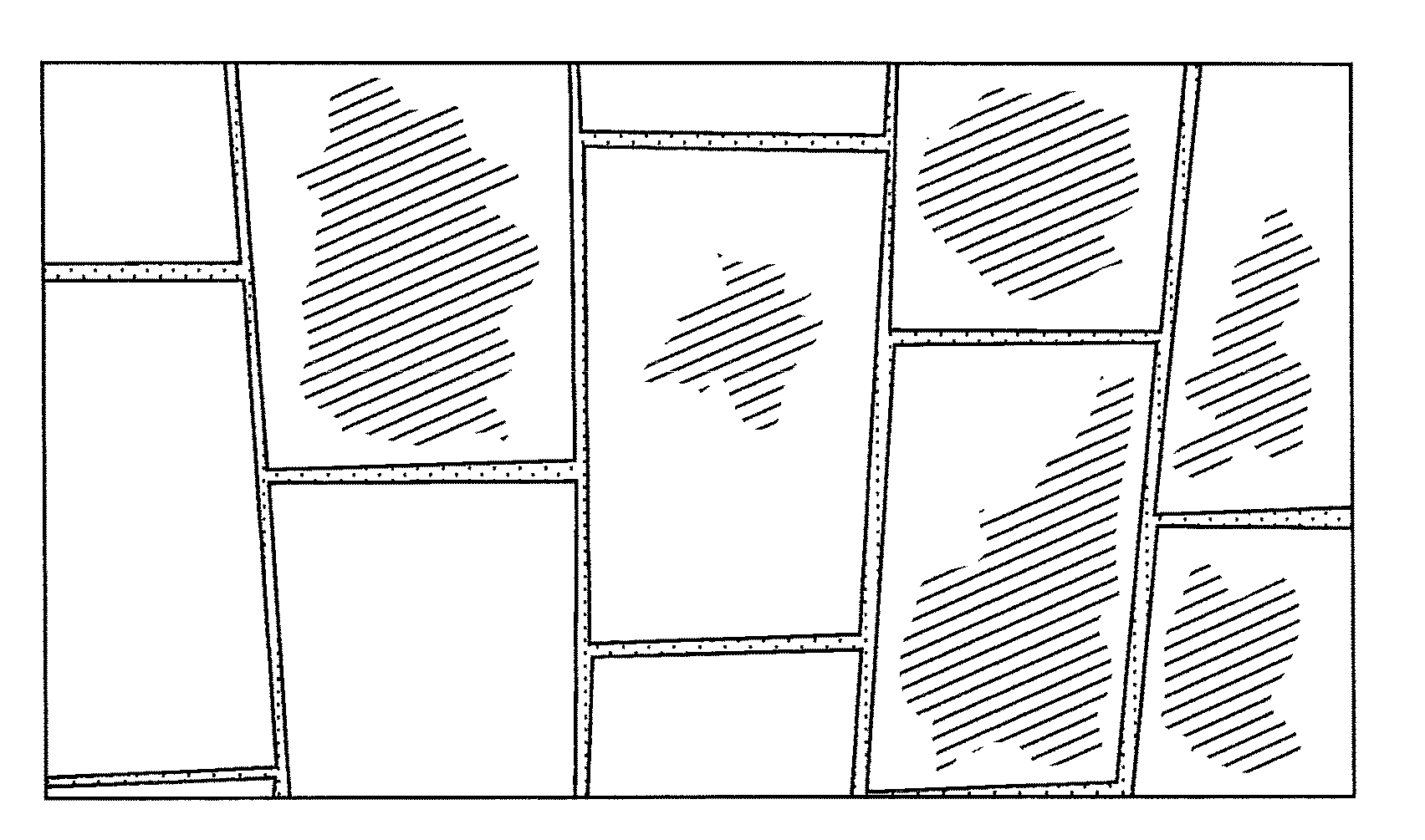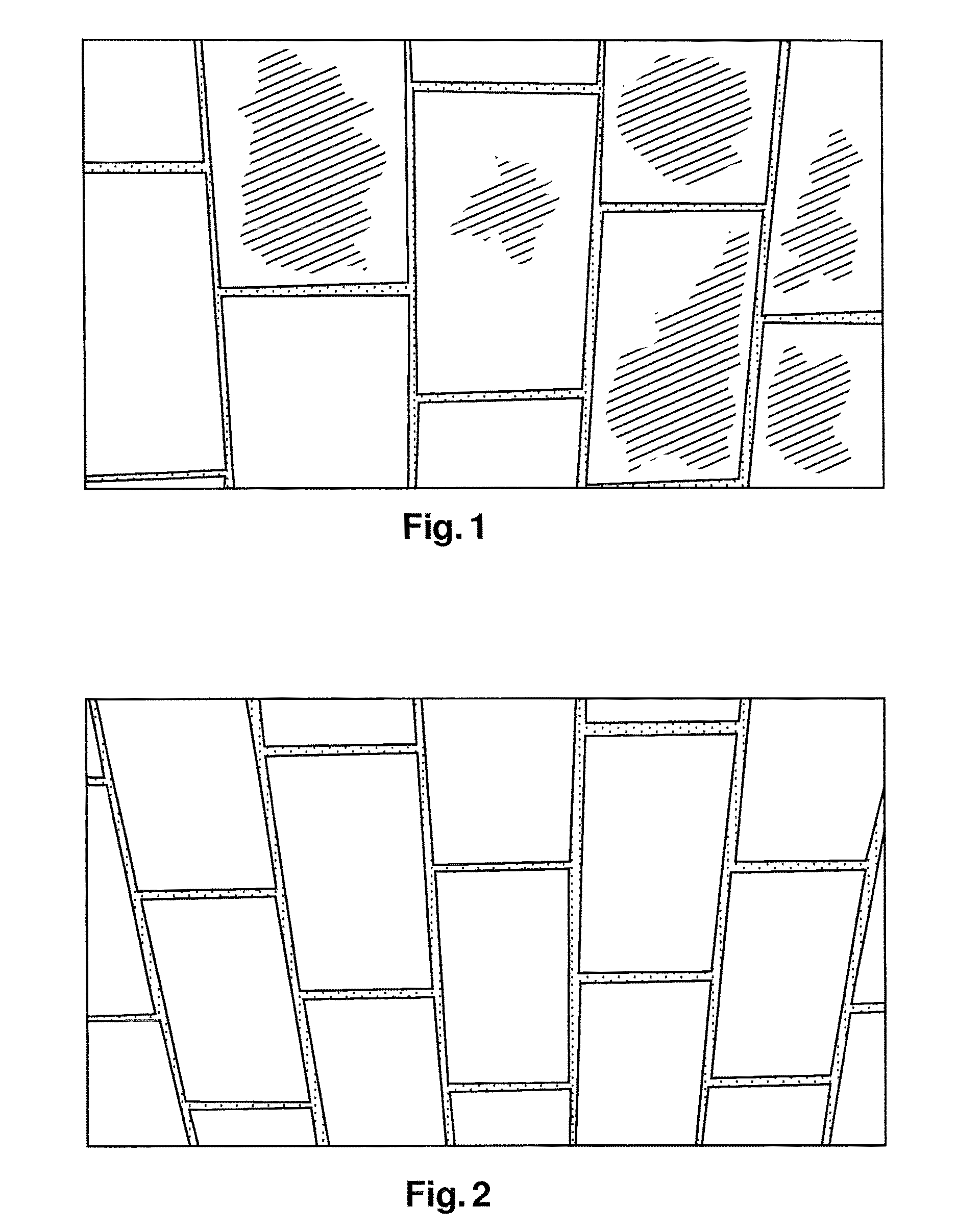Binder composition and path material comprising a binder composition
a technology of composition and binder, which is applied in the direction of in situ paving, paths, constructions, etc., can solve the problems of high susceptibility to erosion, low strength and durability of path areas or joint fillings produced with construction materials, and increase in weed infestation of these areas and joints with the length of their use. , to achieve the effect of reducing binding action, preventing too rapid swelling process, and accelerating the degradation of organic hydrocolloid materials
- Summary
- Abstract
- Description
- Claims
- Application Information
AI Technical Summary
Benefits of technology
Problems solved by technology
Method used
Image
Examples
example 1
[0069]It is known from the prior art (WO 2006 / 029539 A1) that a path material of the following composition is superior in terms of erosion resistance to a mixture of an aggregate and only psyllium as binder material. The mixture known from the prior art has the following composition (sample A):
[0070]Aggregate: 97.2 wt. % grain size 0-2 mm
[0071]Psyllium: 1.4 wt. %
[0072]Calcium hydroxide: 0.8 wt. %
[0073]Sodium carbonate (soda): 0.6 wt. %
[0074](path material, in particular for jointing, from the prior art)
[0075]The above-described sample A was compared with a path material comprising the binder composition according to the invention. The composition was as follows (sample B):
[0076]Aggregate: 96.6 wt. % grain size 0-2 mm
[0077]Psyllium: 1.4 wt. %
[0078]Potassium silicate K2O*3 SiO2) 1.0 wt. %
[0079]Sodium carbonate: 1.0 wt. %
[0080](path material according to the invention).
[0081]The erosion resistance test was carried out using a laboratory rainfall simulator from TU...
example 2
Observation of Resilience
[0085]The two compositions from Example 1 (sample A, prior art, sample B, according to the invention) were placed in Petri dishes in order to evaluate their consistency after mixing with water and their reaction on contact with air and drying. 20 g of each sample were introduced by means of a spoon into a Petri dish having a diameter of 5 cm and a height of 5 mm. The samples were sprayed with water from a round flask with an atomiser (30 ml volume), and the contents were applied to the samples by means of several bursts of spray. The samples were then dried at 30 degrees.
[0086]It was observed that the composition of sample B according to the invention subsequently had a more homogeneous and more resilient consistency than did sample A (prior art).
[0087]The following observation was made in subsequent tests after wetting several times with the same amount of water from a spray bottle and subsequent drying:
[0088]It was found in a test after wetting the samples...
example 3
Cleaning Test of the Stone Surface
[0090]Using the composition of sample B (according to the invention) from Example 1, the property of producing film and discolouration on stone surfaces was studied in a practical test. The composition was again compared with sample A from Example 1. Both samples were applied to a paving stone surface and inserted as jointing material under the same insertion conditions and with the same steps. The procedure was as follows: Two 5 m2 stone areas of paving bricks were laid and jointed with a dry stone surface. To that end, the samples (jointing material) were spread over the stone surface and distributed evenly by means of a broom. The stone surfaces were then compressed with a vibratory plate and blown and cleaned with a leaf blower. The stone area was then watered carefully with a hosepipe and watering with a fine spray head, and the binder was activated. After a waiting time of 10 minutes, the stone surface and the joints were watered with a powerf...
PUM
| Property | Measurement | Unit |
|---|---|---|
| Grain size | aaaaa | aaaaa |
| Grain size | aaaaa | aaaaa |
| Weight ratio | aaaaa | aaaaa |
Abstract
Description
Claims
Application Information
 Login to View More
Login to View More - R&D
- Intellectual Property
- Life Sciences
- Materials
- Tech Scout
- Unparalleled Data Quality
- Higher Quality Content
- 60% Fewer Hallucinations
Browse by: Latest US Patents, China's latest patents, Technical Efficacy Thesaurus, Application Domain, Technology Topic, Popular Technical Reports.
© 2025 PatSnap. All rights reserved.Legal|Privacy policy|Modern Slavery Act Transparency Statement|Sitemap|About US| Contact US: help@patsnap.com


